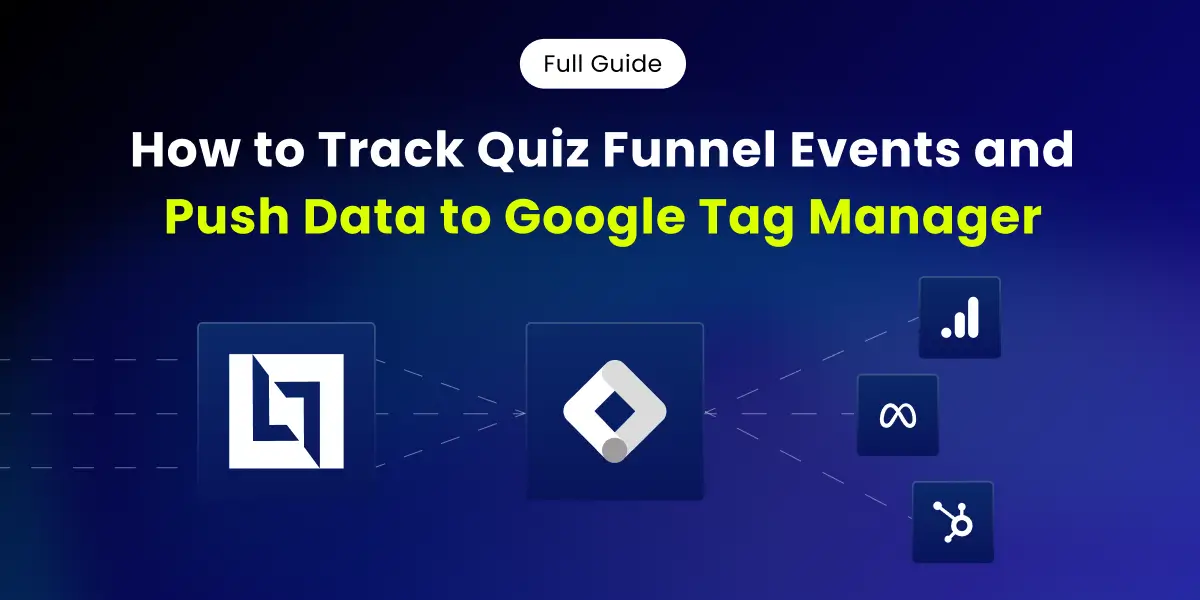In the home services industry, great marketing is what separates busy calendars from empty ones.
In 2025, it’s not just about being online. It’s about being visible, trusted, and ready to convert leads fast.
This guide is for home service businesses that want more than just clicks.
You’ll learn how to attract high-quality leads, rank higher in local searches, and turn marketing efforts into real revenue.
Inside, you’ll find 20 expert-backed home services marketing strategies. All built for local companies that want to grow, from HVAC to plumbing, cleaning, electrical, and other services.
We’ll cover:
- How to use local SEO and content marketing to drive more traffic
- How to boost conversion rates with personalized landing pages
- How to get more phone calls, form submissions, and referrals
- How to launch and test faster using a tool like LanderLab
Just proven ideas to help you get more customers, improve your digital marketing, and grow with a data-driven approach.
Top 20 Home Services Marketing Strategies to Get More Leads in 2025
1. Build City-Specific Landing Pages
If you’re sending all your traffic to a single homepage, you’re leaving leads on the table. In the home services industry, people search for specific solutions in their area.
Think “plumber in Dallas” or “HVAC repair near Austin.” Google prioritizes location-based pages in local searches, and customers trust businesses that look local.
For example, like in the image below, you can show a clickable list or map of all U.S. states. When a visitor clicks on their state (like Texas, California, or Florida), they’re taken to a localized service page.
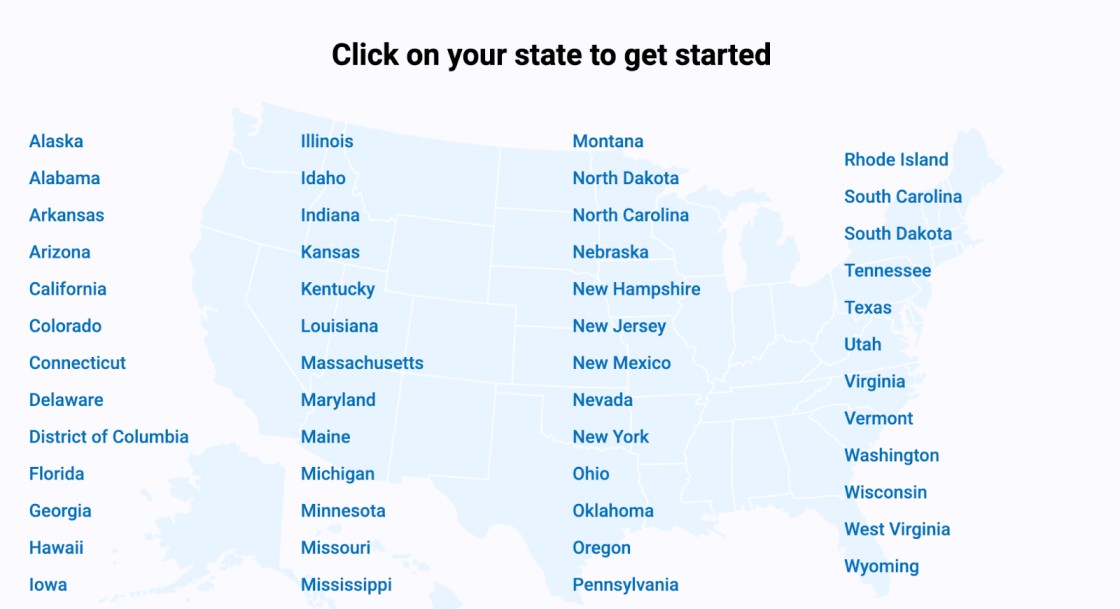
Create separate landing pages for each city or service area you operate in. Each page should include the city name in the headline, URL, and throughout the copy.
Add local photos, customer reviews, and your service area map to build trust with nearby visitors and improve your chances of showing up in search engines.
With LanderLab, you can duplicate and customize pages in seconds, or even import your top-performing service page via URL. Add personalized headlines with AI tools and launch city-specific landing pages fast, without writing everything from scratch.
This improves SEO, boosts conversion rates, and helps your business show up when it matters most, when someone nearby needs your service right now.
2. Add Trust Signals to Every Page
Before anyone books your service, they ask: “Can I trust this company?”
That’s why trust signals. Things like online reviews, certifications, years of experience, and local awards are important for building confidence with potential customers.
Add at least 2–3 trust elements to every page. Display your star rating on Google, customer testimonials, “licensed & insured” badges, and logos of local associations you belong to. These cues reduce friction and can instantly increase your conversion rates.
With LanderLab, you can use pre-designed “trust blocks” to showcase reviews, credentials, and badges across all your landing pages. Just drag, drop, and update the content for each service or location.
For example, like in the image below, you can display well-known brand logos, star ratings, and a short 3-step trust process. It makes the offer look credible and easy to follow at a glance.
This landing page uses a customer testimonial and a “5-Star Rated on Google” badge to help build trust right next to the contact form.
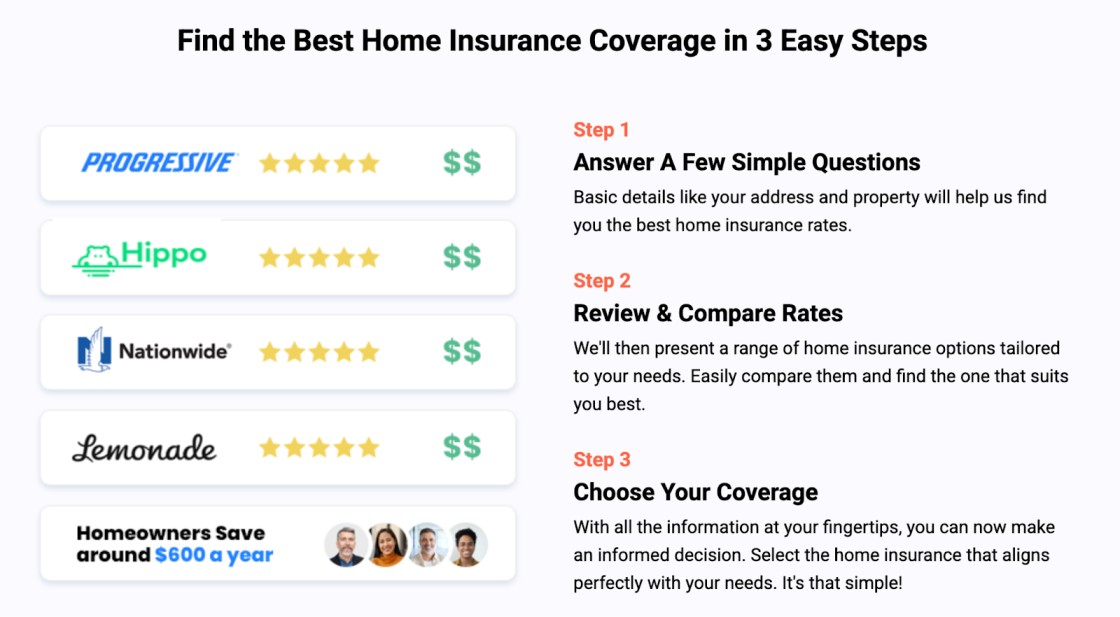
People don’t just want fast service; they want reliable service. Trust signals tell them, “You’re in good hands.”
3. Optimize for “Near Me” Searches
Every day, thousands of people search for services like “electrician near me” or “AC repair near me.”
These local searches show high intent; people are ready to hire. But if your site doesn’t use these keywords correctly, you’re invisible.
Make sure your page titles, meta descriptions, and headlines include phrases like “near me,” “in [city],” or “serving [region].”
Update your content to match how real customers search, for example, “emergency plumbing near me” or “best pest control in Miami.” Also, add your business to Google Business Profile and make sure your service areas are up to date.
Here’s a real Google search result for “emergency plumbing near me,” showing how top-ranking listings use local keywords in their headlines and metadata to attract ready-to-book customers.
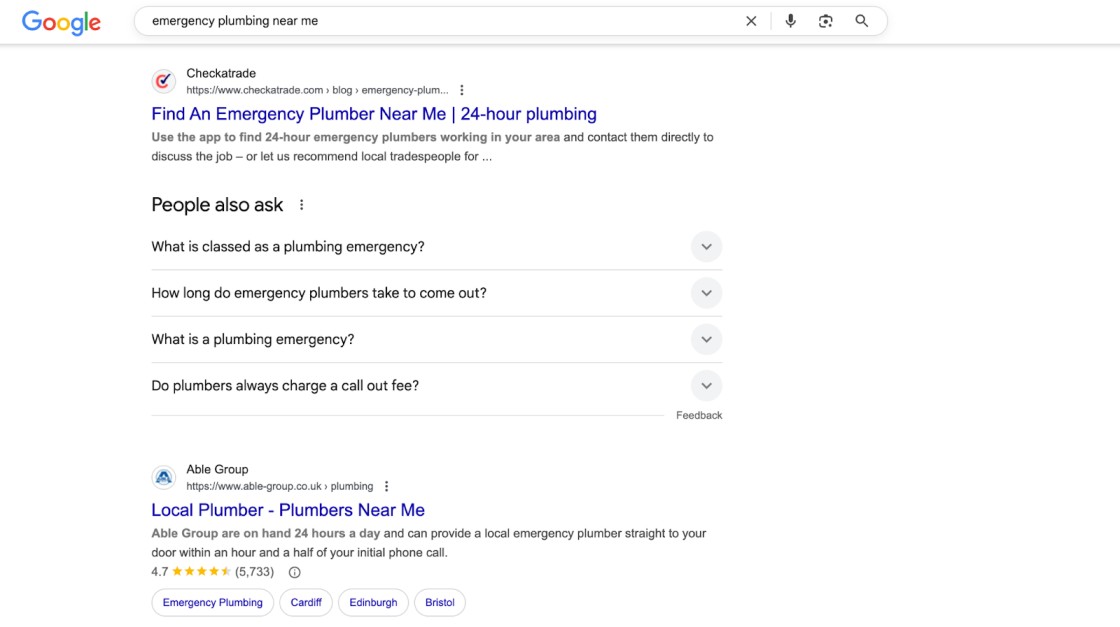
These keywords don’t just help you rank higher; they attract customers who are actively searching for help right now on their mobile devices. That means more leads, faster bookings, and a better return on your marketing investment.
4. Use Click-to-Call CTAs and Sticky Phone Bars
When someone finds your service on their phone, they’re not looking to fill out a long form.
They just want to call. That’s why mobile-first CTAs (calls to action) are essential for converting local traffic into real phone calls.
Add a bold, mobile-friendly “Call Now” or “Contact Us” button at the top and bottom of your landing pages. Use sticky headers or footers that stay visible as the visitor scrolls.
On mobile devices, make sure the phone number is clickable so customers can tap and connect instantly.
This landing page keeps the CTA clear and front-and-center with a large “Contact Us” button, compelling headline, and supporting message that encourages fast action.
It grabs attention, explains the benefit, and prompts fast action, the exact formula for turning clicks into customers.
Want to launch pages that convert better and faster?
Why it works: A focused landing page meets the visitor where they are…
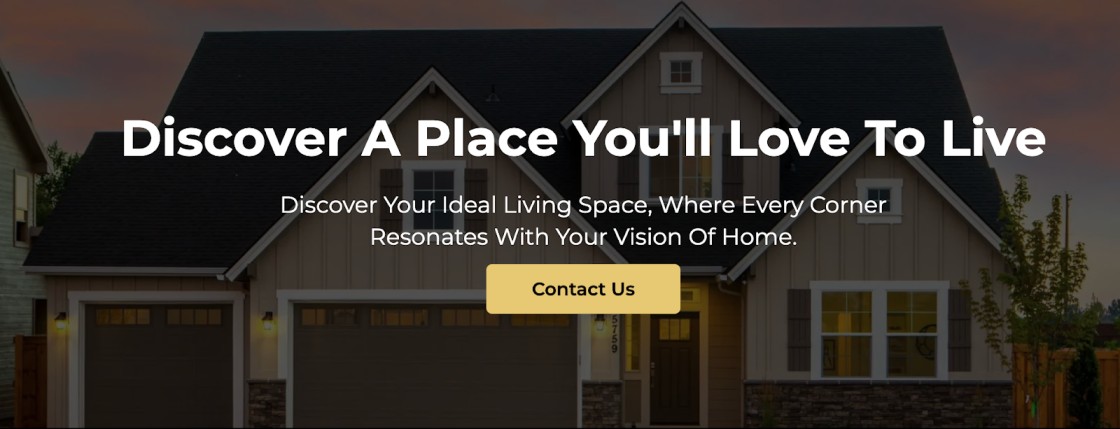
Home service inquiries often happen in a hurry, such as a broken pipe, no hot water, or a power outage. A click-to-call CTA removes friction and helps you capture those high-intent leads before they bounce.
5. Make Sure Pages Load Lightning Fast
Speed matters, especially on mobile. A landing page that takes longer than 3 seconds to load can drive visitors away before they even see your offer.
For home services companies, that means missed leads, fewer calls, and wasted marketing investment.
Test your page speed using tools like Google PageSpeed Insights. Compress your images, limit plugins, and choose a builder that uses fast hosting.
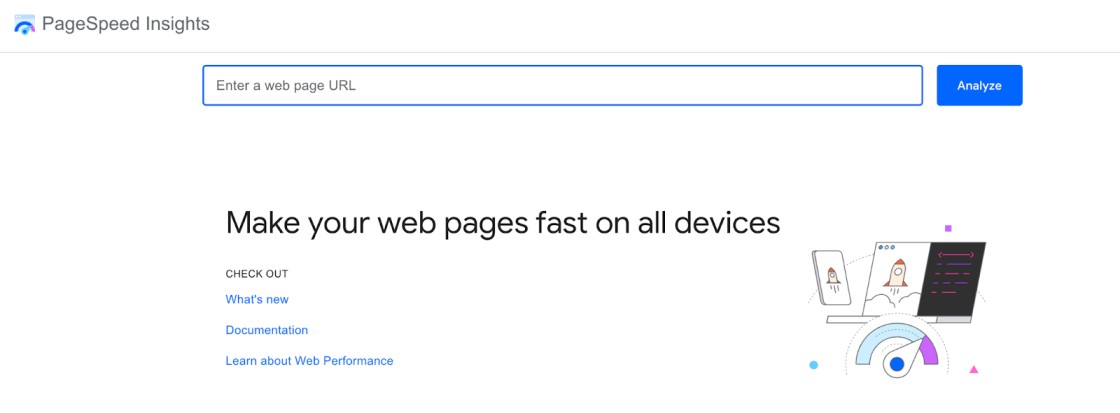
Focus on performance across all devices, especially mobile, where most potential customers are searching.
Faster pages mean lower bounce rates, more leads, and a smoother path from click to call. In 2025, speed isn’t optional; it’s part of your strategy.
6. Use Landing Pages Instead of Your Homepage
Your homepage isn’t designed to convert. It talks about your company, not the problem your customer is trying to solve.
When you’re running Google Ads, Local Service Ads, or even Facebook campaigns, sending traffic to your homepage can hurt your conversion rates and burn through your marketing budget fast.
Instead, create dedicated landing pages for each service, campaign, or location. A great landing page focuses on one service, one audience, and one clear action, like calling your team or requesting a quote.
This targeted approach gives you better control over the message, design, and offer, which leads to more qualified leads and higher ROI.
This landing page example is built around one clear offer (“Get New Windows Now”), with a single call-to-action and a strong visual showing the problem and solution side-by-side.
It grabs attention, explains the benefit, and prompts fast action, the exact formula for turning clicks into customers.
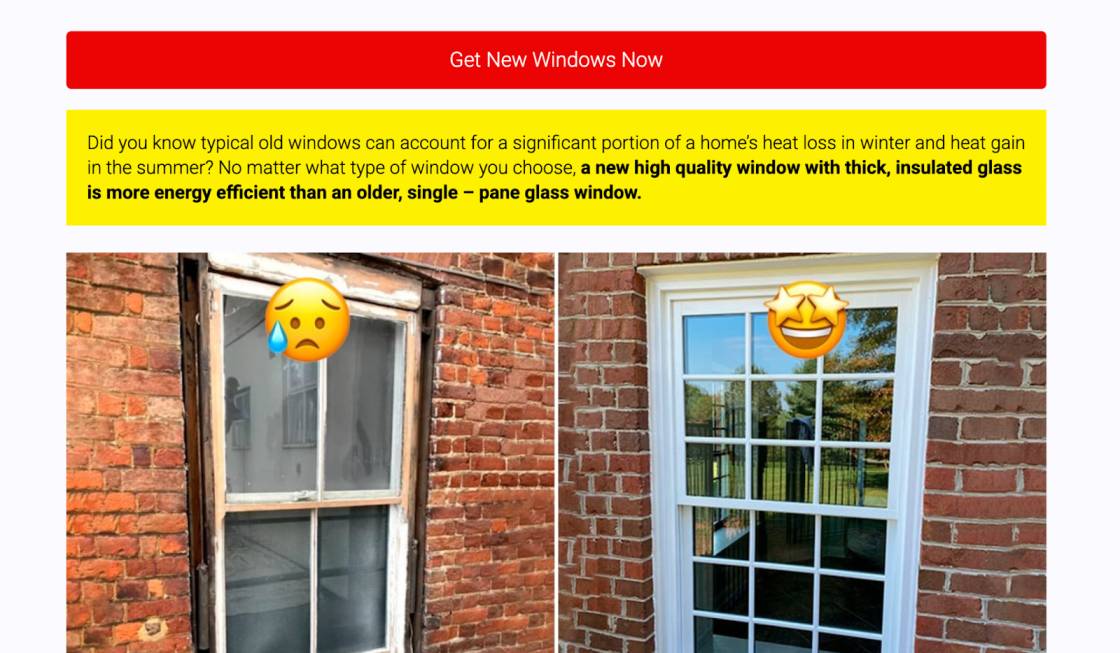
Why it works: A focused landing page meets the visitor where they are. It speaks to their exact problem and gives them a fast way to act. That means higher conversion rates, less ad waste, and more revenue from every campaign.
7. Run A/B Tests on Headlines & CTAs
Not every headline or call-to-action will hit the mark the first time. What gets clicks in one city might flop in another.
That’s why smart home services companies test different versions of their landing pages to learn what works and what doesn’t.
Start simple: test two different headlines, or try a “Book Now” button versus “Schedule My Service.” Keep the rest of the page the same.
After a few days of traffic, review the data to see which version gets more leads. From there, tweak one variable at a time, like images, testimonials, or service descriptions.
LanderLab makes this easy with built-in A/B testing on all plans, no third-party tools needed. Just duplicate your page, tweak the copy, and let the platform run both versions automatically.
Testing removes the guesswork. It gives you real data on customer behavior and helps you fine-tune your message for your target audience.
8. Use Geo-Fencing to Target Local Areas
The more precise your targeting, the better your results.
Geo-fencing lets you show ads only to people in specific areas, like certain ZIP codes, neighborhoods, or even a radius around your office. That means you stop wasting budget on clicks from people you can’t serve.
Use geo-fencing in platforms like Google Ads or Meta Ads Manager to create virtual boundaries around your service areas.
Combine this with city-specific ad copy and matching landing pages. For example, target “HVAC repair” within 10 miles of your service location and link the ad to a page that says “Trusted HVAC Services in [City].”
This landing page highlights a ZIP code-specific offer (“2024 Window Renewal Initiative”) with a clear eligibility checklist and a CTA that encourages users to check if they qualify.
It’s geo-targeting in action, speaking only to local homeowners who are actually eligible.
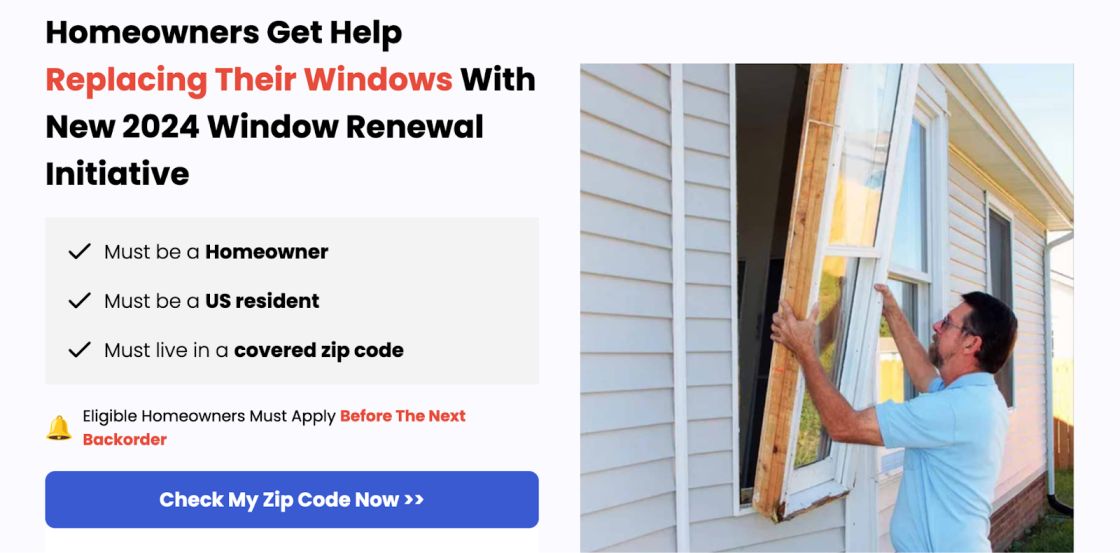
With geo-fencing, you speak directly to your local audience, the people most likely to become customers. It’s a smart way to stretch your marketing investment and get more leads without increasing your budget.
9. Add Live Chat or Callback Forms
When someone lands on your page with a question (and there’s no one to answer), they bounce. Fast.
In the home services industry, fast communication builds trust and wins business. That’s why adding live chat or callback request forms can help you catch leads in real time.
Add a simple “Request a Callback” form above the fold or enable a chat widget that connects directly to your team.
For urgent services like plumbing or HVAC repair, offer a “Speak to a Tech Now” button with a phone option. Make sure forms are mobile-friendly and ask only for essential info (name, number, service type).
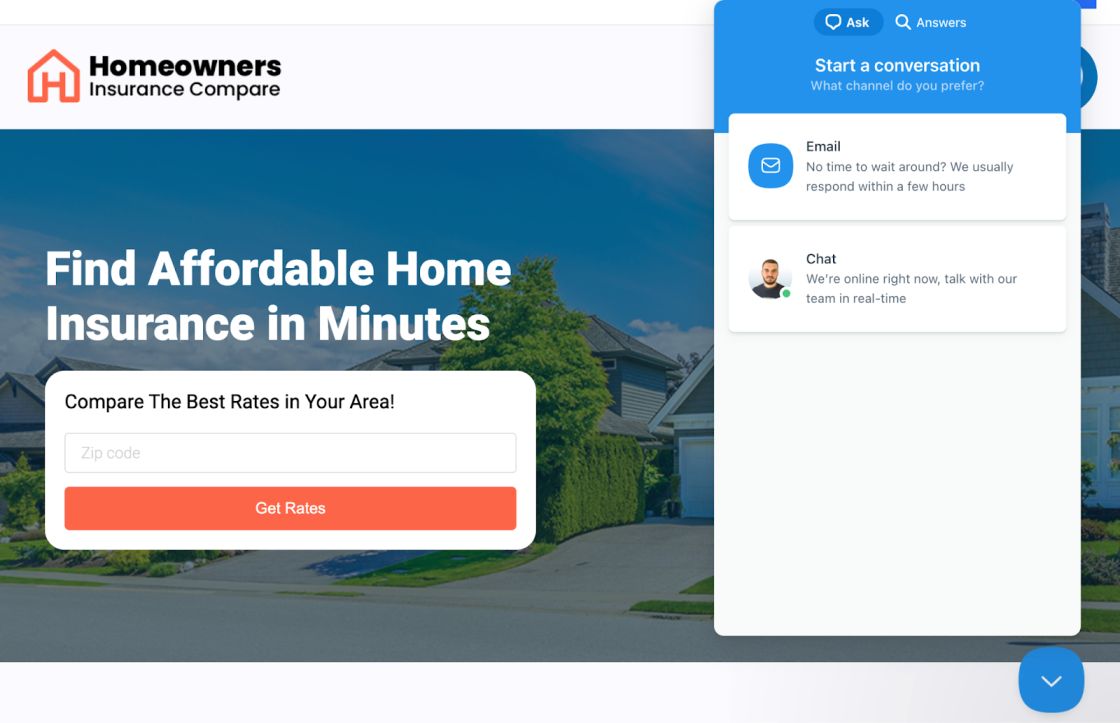
Customers want answers now, not “we’ll get back to you next week.” Live chat and instant callback options show responsiveness and give you a major edge over competitors who rely on email forms alone. That means more leads, more phone calls, and a better customer experience.
10. Track Leads with Dynamic Call Tracking
If you don’t know which ad, page, or campaign drove the call, you can’t improve your marketing strategy.
That’s where dynamic call tracking comes in. It shows exactly where your leads are coming from, so you can double down on what’s working and stop wasting budget on what’s not.
Assign unique tracking numbers to different landing pages or ad groups. When someone calls, you’ll know which page, campaign, or keyword triggered the action.
11. Ask for Reviews After Every Job
In the home services industry, your reputation is everything.
90% of customers read online reviews before booking a service, and if you’re not actively asking for them, you’re missing a huge opportunity to stand out.
Make it a habit: after every completed job, send a quick follow-up asking for a Google, Yelp, or Facebook review.
Keep it simple: a thank you and a direct link.
If you’re using a CRM or scheduling tool, set up automated review requests. And don’t just collect reviews, showcase them on your website, landing pages, and social media platforms.
Like in the example below:
This landing page example displays real customer reviews with names and star ratings. It’s an excellent way to build trust with new visitors and turn past happy customers into your most persuasive sales tool.
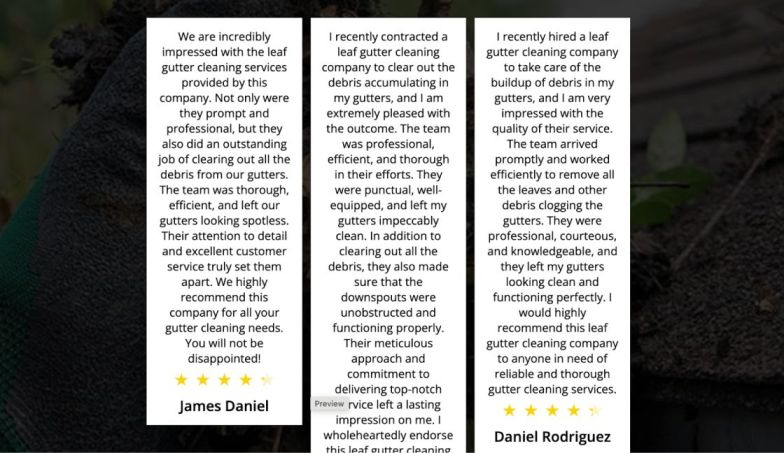
Reviews don’t just improve credibility. They also help you rank higher in local searches. More reviews = more visibility = more customers.
12. Use Before & After Photos in Ads and Pages
People don’t just want to hear that you do great work (they want to see it). Before & after photos are one of the most effective ways to build trust, especially in visual services like landscaping, painting, remodeling, roofing, or cleaning.
Snap photos before you start and right after you finish a job. Use the same angle and lighting when possible.
Then share them on your landing pages, social media, and in Google Posts. You can even build galleries or image sliders that let visitors interact with your results.
This side-by-side image showcases a bathroom remodel with a clear before-and-after transformation. It communicates quality and results instantly, without needing a single line of copy.
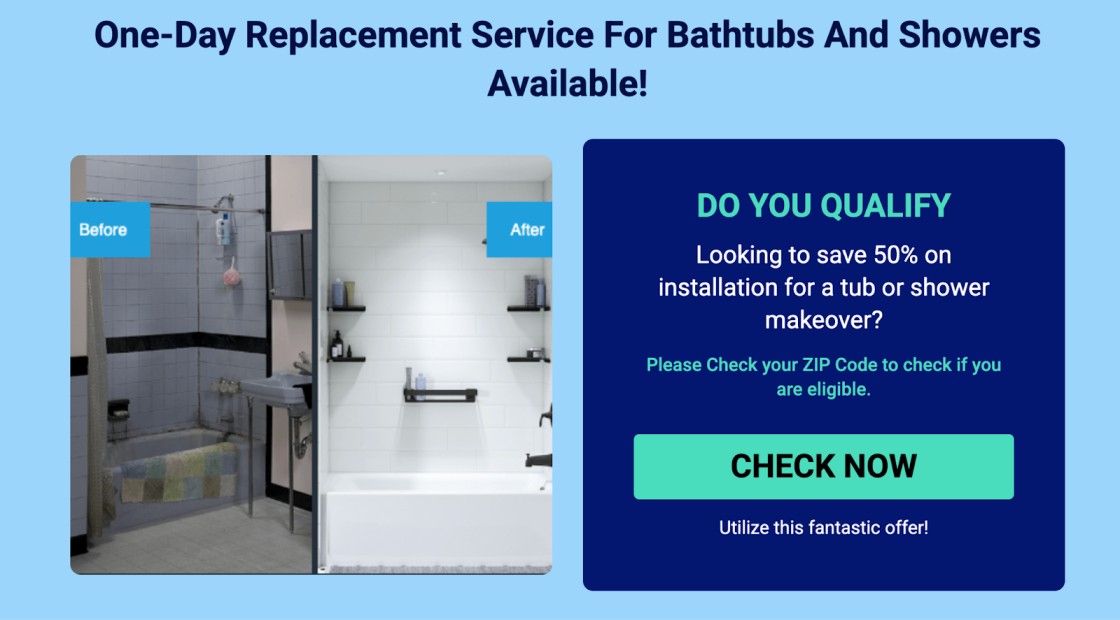
13. Launch a Referral Incentive Program
People trust recommendations from friends more than any ad. A strong referral program helps you tap into word-of-mouth and gives your satisfied customers a reason to spread the word.
Offer a reward for every referral that becomes a paying customer. It could be a discount on their next service, a gift card, or even cash.
Promote your referral program in follow-up emails, on your landing pages, and during the job itself. The easier it is to share, the more referrals you’ll get.
Referrals come with built-in trust, and they cost you far less than paid ads. A good referral program helps you grow faster, with higher-quality leads and stronger relationships.
14. Display Certifications & Licenses Prominently
Customers want to feel safe. In the home services industry, trust doesn’t just come from great reviews, it also comes from proof that you’re licensed, certified, and qualified to do the job. If you’ve earned it, show it.
Add your state license number, bonding/insurance details, and any industry certifications (like NATE, EPA, or IICRC) directly on your landing pages and website.
Use logos and badges where possible. Place them near your contact form or CTA to reinforce credibility at the decision point.
For example, it can be a landing page that includes an “EPA Certified Technician” badge right next to the quote form, reinforcing trust before the visitor clicks “Book Now.”
These visual cues reduce hesitation, build confidence, and set you apart from the “guy with a truck and a wrench.” It’s one more way to earn more leads and build trust that lasts.
15. Retarget Site Visitors with Service-Specific Offers
Most visitors won’t convert the first time, and that’s okay.
But if you don’t follow up, you lose them for good. Retargeting ads give you a second (or third) chance to stay in front of potential customers and bring them back with the right offer.
Use Facebook Ads, Google Display, or YouTube to retarget people who’ve visited your landing pages but didn’t take action.
Create ads that match the service they viewed. For example, “Still need a plumber in [City]? Book now and get 10% off.” Make sure you’ve added tracking pixels to your site or landing pages to enable retargeting.
Retargeting keeps your business top of mind. It helps turn abandoned visits into new customers and boosts the return on your marketing investment (without needing more traffic).
16. Send Seasonal Email Campaigns
The best home service businesses don’t just wait for calls; they create demand.
Seasonal email marketing is a smart way to remind past customers when it’s time for maintenance, upgrades, or inspections based on the time of year.
Create simple email campaigns around services people need seasonally:
- Spring: Gutter cleaning, pest control, and AC inspections
- Summer: HVAC tune-ups, landscaping, deck repairs
- Fall: Furnace checks, chimney cleaning, insulation
- Winter: Emergency plumbing, snow removal, generator installs
Include a short message, a clear offer, and a direct link to your landing page. Segment your list based on service history or location for even better results.
Timely emails = more repeat business. They keep your brand top of mind, drive higher conversion rates, and help you book more jobs without spending on ads.
17. Build an Email List with Smart Lead Capture Forms
Every visitor who doesn’t book today could become a customer tomorrow (if you stay in touch). That’s why collecting emails is one of the smartest long-term marketing strategies in the home services industry.
Place short, low-friction forms on your landing pages, blog posts, and service pages. Offer something useful in exchange, like a “Seasonal Maintenance Checklist,” “$25 Off Your First Service,” or “Priority Booking.”
Keep forms simple: name, email, maybe phone. The goal is to get the lead, not their life story.
With LanderLab, you can easily add lead capture forms and connect them to your email platform or CRM via Zapier or webhooks, no tech team needed.
This landing page below uses a short, modern lead capture form to offer a free consultation. It collects only the essential info, has a bold CTA, and blends seamlessly with the design, everything you need to start building trust and your email list.
You can find this landing page template on LanderLab and start collecting leads instantly.
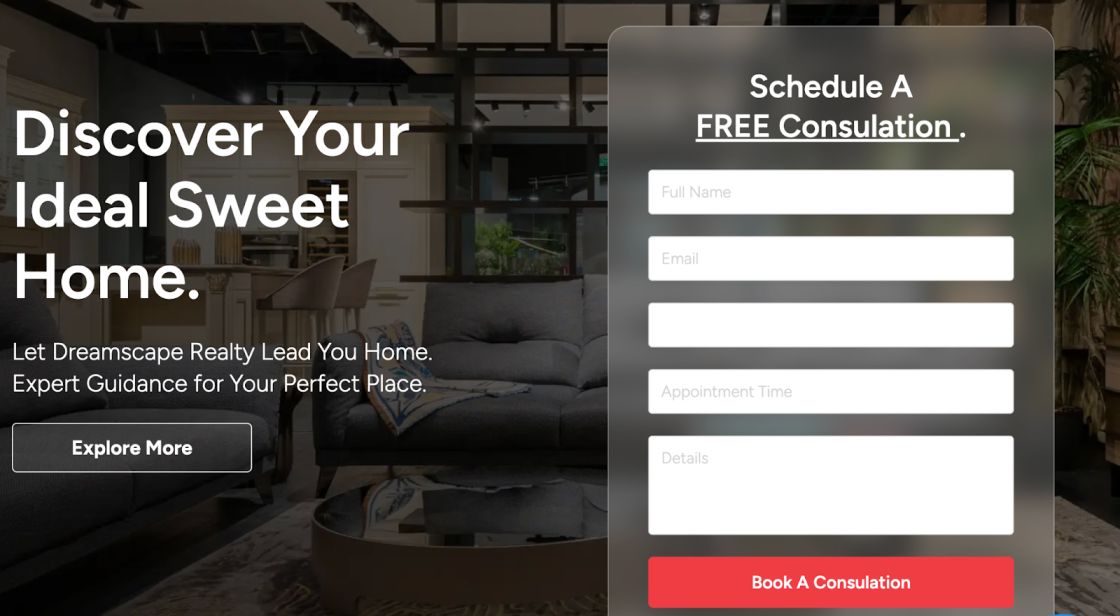
A growing email list = more chances to follow up, build trust, and turn cold visitors into warm leads. It also means you’ll rely less on paid ads over time and save money while staying top of mind.
18. Use AI Tools to Write Page Copy and Ads
You didn’t start your business to become a copywriter. But great headlines, clear CTAs, and helpful content can make the difference between a visitor clicking “Book Now”. That’s where AI-powered tools come in.
Use AI to generate landing page headlines, service descriptions, social media captions, and even Google Ads.
These tools help you write faster, test more ideas, and avoid staring at a blank screen. You can fine-tune the copy to match your service, city, and target audience, and still sound like a real human.
Moreover, AI saves time, helps you write for conversion, and removes the stress of “what do I say here?” — so you can focus on what you do best: serving your customers.
19. Clone High-Converting Pages for New Campaigns
If a page is working, don’t reinvent it. Just clone it, tweak the details, and reuse it for a new location, service, or audience.
This is one of the fastest ways for home services companies to scale their marketing efforts without burning time or budget.
Take your best-performing landing page and duplicate it. Swap out the city name, phone number, and testimonial.
Adjust the images or offer slightly to match the new audience. You already know the layout and copy convert, now you’re just making it local or campaign-specific.
You already did the hard work once. Cloning successful pages lets you launch faster, save time, and keep your branding consistent, while generating more leads across every location.
20. Centralize Lead Data with Integrations
Leads slipping through the cracks? That’s what happens when forms, calls, and chats are scattered across tools with no connection.
Home services companies need to keep all their lead data in one place, so their team can respond faster and close more jobs.
Connect your landing pages to a CRM, lead distribution system, or job scheduling platform like LeadProsper, Zapier, or HubSpot.
Set up automations so every form submission, call, or chat instantly routes to your inbox or booking system. This gives you full visibility into lead sources, response times, and conversion performance.
Centralizing your lead data helps you analyze performance, respond faster, and make better decisions, so you can turn more leads into revenue with less effort.
Ready to Turn More Clicks into Booked Jobs? Try LanderLab!
If you’re running ads, building city pages, or testing new offers, LanderLab gives home service businesses the tools to grow faster.
- 150+ high-converting templates built for local services
- Clone your competitor’s landing page (just paste the URL)
- Launch SEO + ad-ready pages in minutes, not weeks
- Built-in AI tools, A/B testing, and integrations (no dev needed)
- Plans start at $89/month with a 7-day free trial
Spend less time building pages and more time booking jobs.
…you can double down on what’s working and stop wasting budget on what’s not.
Try LanderLab today and see why growing home service companies rely on it to generate leads, increase conversions, and scale smarter.



